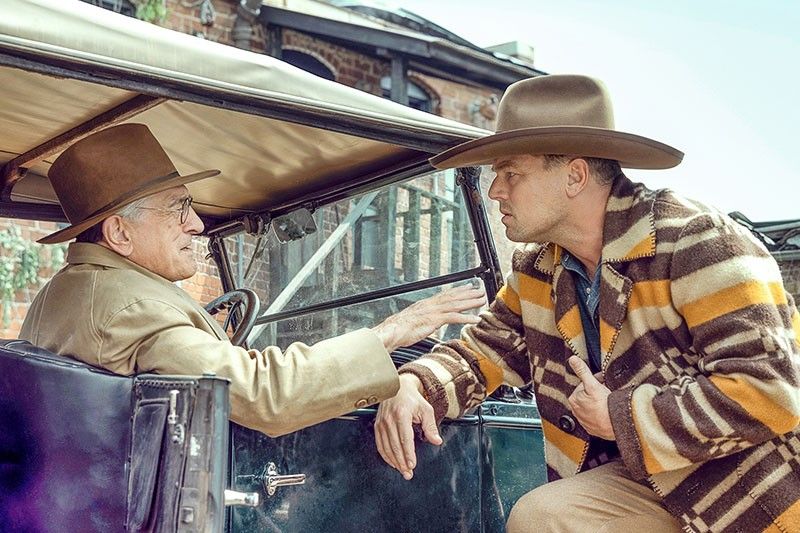'Killers of the Flower Moon' review: Scorsese rallies DiCaprio, De Niro for a bloody tale in the West

MANILA, Philippines — There is undeniably no question that Martin Scorsese is the greatest living filmmaker today, and he further cements that title with his newest film "Killers of the Flower Moon," starring two longtime collaborators, Leonardo DiCaprio and Robert de Niro.
The movie is based on the 2017 novel of the same name by David Grann, circling around the mysterious murders of Osage Nation members in Oklahoma shortly after oil was discovered on the land tribes settled on.
DiCaprio plays war veteran Ernest Burkhart, who arrives in Fairfax county, to live with his uncle William "King" Hale, a man of immense influence in the county who encourages his nephew to pursue tribal member Mollie (played by Lily Gladstone).
Mollie would inherit her family's oil-filled land should her sickly mother and sisters pass away, which is an unsettling thought as killings and deaths among the Osage Nation occur without investigation by authorities.
"Killers of the Flower Moon" premiered at the Cannes Film Festival and was supposed to stream first on Apple TV+, however, it was greenlit to screen in cinemas first instead. It is Scorsese's first movie at Cannes in almost 40 years.
This appeared to be a key decision as Scorsese's film is a sprawling three-and-a-half hour crime-western epic that dives into a bloody chapter of American history, particularly about the country's first inhabitants, the Osage people, who were subjected to unfair treatment by the white men in power.
Scorsese pays respect to the Osage Nation by bookending his movie with tribal rituals, even giving them an introduction through old film clips, and allowing indigineous actors like Gladstone to revel in scenes even with big names like DiCaprio and De Niro in the immediate vicinity.
Related: DiCaprio praises Scorsese's epic 'reckoning with past' at Cannes
The two Oscar winners' characters drive the screenplay by Scorsese and Eric Roth forward, expertly weaving through all the efforts the men are willing to go through to cover their tracks in search of wealth and power — two things not as congruent as the Osage people have experienced.
DiCaprio's bumbling, money-hungry Burkhart is reminiscent of his characterizations for previous Scorsese films "The Departed" and "The Wolf of Wall Street," while a domineering De Niro swallows the screen with such intensity and fear as a familiar reincarnation of evil.
Lines toward the film's end uttered by Hale speak of how his power, influence and contributions will overpower any offense he may be accused of, and it's an eerie comparison to the Philippines' own history, where corrupt individuals are praised despite the crimes, documented or not, they have committed.
Still the glowing light of the movie is Gladstone, whose soul shines even at the behest of men seeking to control her or what's hers, a committed performance that rivals those of her co-stars, which include belated appearances by Jesse Plemons, John Lithgow and another Oscar winner, Brendan Fraser.
The story is what gives the film Scorsese's familiar crime elements, but it is the cinematography of other longtime collaborator, Rodrigo Prieto, and the editing of Thelma Schoonmaker that makes "Killers of the Flower Moon" a complex Western. Prieto also shot "Barbie."
The movie is also composer Robbie Robertson's, a good friend of Scorsese's, last project before he passed away, hence, the dedication to him in the credits.
At the end of this lengthy feature (just a few minutes shorter than "The Irishman") is a special appearance, a moment where Scorsese allows the audience to settle into the piece of history they've been told; however, viewers will come away with different kinds of satisfaction.
"Killers of the Flower Moon" premieres in Philippine cinemas on October 18.
RELATED: Martin Scorsese meets Pope Francis, to make another Jesus movie – reports
- Latest
- Trending































